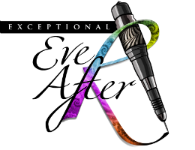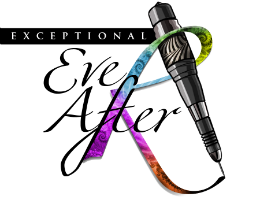
Acne Scar, Surgical Scar and Stretch Mark Reduction is a type of Skin Needling also called “Medical Needling” and “Dermal Needling” (it is not Acupuncture). It is similar to the Collagen Induction Therapy technique only the needle depth is usually deeper. The technique breaks up and softens scarring while reducing the depth and structure of the scar including chicken pock or acne scars. Needling is a natural skin rejuvenation method that fills and softens wrinkles and scars. It does not use chemicals, fillers, injections, or lasers. The process also creates thousands of microscopic “pin pricks” to activate your body’s wound healing process. As your skin heals, it uses your own collagen to fill the “valleys” of wrinkles and scars naturally creating new uniform collagen strands leaving a smoother surface.
The technique was discovered to be effective in the 1940’s, but the methods of performing it today are more sophisticated. Needling is also called Dry Needling, Dry Tattooing, Needle Abrasion, Needle Dermabrasion, Facial Mesotherapy, Multitrepannic Collagen Actuation (MCA), Percutaneous Collagen Induction (PCI), or Collagen Induction Therapy (CIT). This procedure is more popular in other countries than in the United States.
However, plastic surgeons in the U.S. have used it in addition to those in Europe, Canada, Australia, New Zealand, and South Africa.
Check out these testimonials for Dermapen
http://www.dermapenworld.com/dp-family/reviews-and-testimonials.html
Scars are needled with a specialized device called a micro needling device and/or Medical Grade Dermapen in order to reduce, soften, camouflage and smooth their “pulled” and unnatural appearance. Sometimes the natural melanin will also be stimulated and cause the scar to blend with the natural skin tone as an added benefit. This process is similar to the Collagen Induction Process offered and more detail about the process can be found here.
The needle length and needle diameter are most important to determine the best combination for treating scars and rejuvenating the skin. Needling causes numerous microscopic dermal injuries. Needle diameter is very important as we are seeking to maximize the dermal injury without creating a new scar.
The target when we needle the dermis is a layer in the upper dermis called the intermediate reticular dermis. This dermal layer contains the highest number of stem cells which are able to produce new collagen. The epidermis (the outer layer of the skin) varies in depth from .05mm on the eyelids to 1.5mm on the soles of the feet. The epidermis of the face (other than the eyelids) varies from 0.3mm to 1.5mm in depth and therefore a 0.75mm to 2.5mm needle length is more than adequate to reach the intermediate reticular dermis.

 [plain]Skin needling is now well established as a treatment option for depressed acne scarring and Stretch Marks. It is a far more cost effective option than fractional laser therapy and delivers very similar results with repeated treatments.[/plain]
[plain]Skin needling is now well established as a treatment option for depressed acne scarring and Stretch Marks. It is a far more cost effective option than fractional laser therapy and delivers very similar results with repeated treatments.[/plain]
How Skin Needling Works
The concept behind needling is the stimulation of new collagen product ion in your skin. The dry needle abrasion breaks your skin and causes micro-trauma and micro-inflammation. Your body will respond by sending blood to the area for healing. Blood platelets then release clotting factors, cytokines, and essential growth factors. Fibroblasts make and deposit new extracellular matrix with collagen and elastin. As your skin repairs itself, new collagen builds up in the Papillary Dermis (middle layer) just below the surface. The wrinkles, lines, or depressed scars plump from the bottom-up without the use of anything artificial. Repeated needling sessions gradually and continually build new collagen to fill-in the treated areas. The terms Meso Therapy, Collagen Induction, Collagen Induction Therapy or CIT are sometimes used to describe this process.
ion in your skin. The dry needle abrasion breaks your skin and causes micro-trauma and micro-inflammation. Your body will respond by sending blood to the area for healing. Blood platelets then release clotting factors, cytokines, and essential growth factors. Fibroblasts make and deposit new extracellular matrix with collagen and elastin. As your skin repairs itself, new collagen builds up in the Papillary Dermis (middle layer) just below the surface. The wrinkles, lines, or depressed scars plump from the bottom-up without the use of anything artificial. Repeated needling sessions gradually and continually build new collagen to fill-in the treated areas. The terms Meso Therapy, Collagen Induction, Collagen Induction Therapy or CIT are sometimes used to describe this process.
Applications of the Needling Technique
- Wrinkle Treatment: Fine lines and wrinkles on the face can be diminished with facial needling.
- Indented Scars: Needling procedures can decrease the depth of pitted, depressed, or shallow scars caused by acne, chicken pox, surgeries, or trauma.
- Surgical Scars: Raised or hypertrophic (overgrown) scars can become smoother with needling treatments that flatten the elevated scar tissue. Examples include borders of skin grafts and other hypertrophic surgical scars.
- Scar Relaxation: Burns and accidents can create fibrous bands of scar tissue that often contract and limit movement. Needling can break down the contracted scar tissue to increase mobility and flexibility. This process is referred to as Scar Tissue Relaxation or Relaxation of Scar Tissue.
How Skin Needling Works on Stretch Marks and Scars


Scar tissue, whether raised, flat or indented is usually abundant in collagen but the scar collagen is thick and typically woven in a different pattern than in the normal skin. Scar tissue isn’t really too different from normal skin, it’s only the thickness and patterns of the fibers that differ. Crushing the scar tissue will crush the scar pattern of the fibers and the body will often remodel the scar into a smoother, better looking, and softer scar. The picture to the right is before and after only (2) treatments on a carpal tunnel surgery scar.
Our body does not expend effort on fixing things it does not consider “broken”. Scar tissue is just a cosmetic problem, it is not perceived as an issue worthy of fixing further by the body. Derma needling is a strategy to force the body to remodel the scar. The trick is that making tiny pricks is not sufficient damage to cause a scar but it is enough for the body to consider needled skin as “broken”. Derma needling triggers healing processes. Unfortunately, our body usually does not bother replacing the scar tissue completely with normal skin – especially when the scar is deep – but it often replaces it with a mixture of scar- and normal tissue, producing a better looking scar. So Skin Needling triggers healing processes and the body tends to heal the area in a way – at least partially – as normal skin should look like. Indented scars fill in and raised scars flatten. It does not work in all cases, but in most people it does work.
Acne scars don’t contain much scar tissue but they are atrophied (missing tissue). The scar will slowly or partially fill in with collagen triggered by a derma pen needles. Wrinkles will also partially fill in. In addition, needling a hypo pigmented scar will facilitate the migration of melanocytes (skin-pigment producing cells) from the surrounding skin into the scar and improve its color. Types of Wrinkle and Scar Treatments
People of all ages want to smooth fine lines, wrinkles, and acne scars. This can be achieved by “resurfacing” techniques that peel, exfoliate, and rejuvenate skin. Methods include chemical peels, microderm abrasion, and laser treatments. These procedures remove the top layer of skin (epidermis) to stimulate re-growth. As new skin develops, collagen and elastin is produced which helps smooth and tighten the skin. Although resurfacing is effective, the skin damage can create side effects including whitening or color loss (hypo-pigmentation), darkening (hyper-pigmentation), overall thinning, or sun sensitivity. Also, the areas around the eyes must be avoided with these procedures. Because some people are not good candidates for these skin resurfacing techniques, an alternative method is available called “Needling” “Skin Needling” “Meso Therapy”
Needling Benefits
Results are similar to those from other skin resurfacing methods. However, the needling technique has several advantages:
- Epidermis Remains Intact: Needling does not remove or damage the outer skin layer (epidermis) entirely like other resurfacing methods do. The healthy skin and blood vessels in-between the lines, wrinkles, or scars are preserved. That improves healing, collagen production, and long-term results.
- Less Pigmentation Changes: Because the epidermis is left untouched, there is less risk of permanent structural damage such as post-inflammatory hyper-pigmentation (skin darkening) or de-pigmentation (color loss or skin whitening).
- Fewer Side Effects:There are NO side effects such as thinning of the skin or increased sun sensitivity because the epidermis is preserved. Skin needling uses no artificial fillers so the chance of an allergic reaction or infection is also minimized.
- Fast Healing and Downtime: Needling is precisely controlled and creates minimal dermal trauma. Healing is rapid with a short “downtime” of only a few days.
- Ongoing Treatments are Possible: Other resurfacing methods cannot be repeated indefinitely because they eventually thin the skin and create photo-sensitivity. But needling can be repeated safely because the dermis becomes thicker in the treated areas instead of thinner. Also, other resurfacing methods must avoid the delicate eye area, but needling can safely treat areas around the eyes such as “Crow’s Feet.” It can also be performed safely on skin that previously had laser re-surfacing treatments or microderm abrasion.


